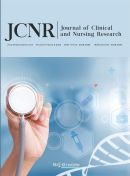Abstract
Objective: To investigate the efficacy of botulinum toxin type A combined with nanofat in the treatment of facial rejuvenation. Methods: from January 2020 to January 2021, 20 patients with facial wrinkles in our hospital (The First Affiliated Hospital of Dalian Medical University) were treated with botulinum toxin type A combined with nanofat, and the effect, duration and complications were observed. Results: After 1, 3 and 6 months of injection, the effective rates were 90%, 75% and 40%, respectively; there was no occurrence of postoperative infection, fat mass, granuloma, and other adverse reactions. Conclusion: Botulinum toxin type A combined with nanofat filling has a clear therapeutic effect in the facial rejuvenation treatment, and can improve the skin texture while improving wrinkles, which is worthy of further popularization and application in clinic.
References
Guo Y, Wang F, Wang A, 2012, Application of OPT Technology Combined with Botulinum Toxin A in Facial Rhytidectomy. China Cosmetic Medicine, 21(13): 1789–1791. https://www.doi.org/10.15909/j.cnki.cn61-1347/r.2012.13.045
Tonnard P, Verpaele A, Peeters G, et al., 2013, Nanofat Grading: Basic Research and Clinical Applications. Plastic Reconstruction Surgery, 132(4): 1017–1026. https://www.doi.org/10.1097/prs.0b013e31829fe1b0
Yu Bo, Li Ming, Du T, et al., 2012, Clinical Effect of Eyebrow Incision Blepharoplasty Combined with Botulinum Toxin A Injection for Orbital Lightening. Chinese Journal of Medical Aesthetics and Cosmetology, 18(4): 264–266. https://www.doi.org/10.3760/cma.j.issn.1671-0290.2012.04.008
Kim WS, Park BS, Park SH, et al., 2009, Anti-Wrinkle Effect of Adopted Stem Cell: Activation of German Fibroblast by Secret Factors. Journal of Dermatological Science, 53(2): 96–102. https://www.doi.org/10.1016/j.jdermsci.2008.08.007
Coleman SR, 2006, Structural Fat Grading: More Than a Permanent Filler. Plastic Reconstruction Surgery, 118(3S): 108S–120S. https://www.doi.org/10.1097/01.prs.0000234610.81672.e7
Tamburino S, Lombardo GA, Tarico MS, et al., 2016, The Role of Nanofat Grading in Vulvar Lichen Sclerosus: A Preliminary Report. Arch Plast Surg, 43(1): 93–95.
Huang H, Li W, Xu Peng, et al., 2016, Experimental Study on Nano Fat Improving the Texture of Photoaging Skin in Nude Mice. Journal of Tissue Engineering and Reconstructive Surgery, 12(4): 212–216 https://www.doi.org/10.3969/j.issn.1673-0364.2016.04.002
Cao F, She W, Huang H, et al., 2019, Study on the Efficacy and Nursing of Nanofat Autologous Fat Transplantation in Improving Facial Scar. China Cosmetic Medicine, 28(06): 152–155. https://www.doi.org/10.15909/j.cnki.cn61-1347/r.003117
Jeyaraman M, Muthu S, Sharma S, et al., 2021, Nanofat: A Therapeutic Paradox in Regenerative Medicine. World Journal of Stem Cells, 13(11): 1733–1746. https://www.doi.org/10.4252/wjsc.v13.i11.1733
Denadai R, Buzzo CL, Raposo-Amaral CA, et al., 2019, Facial Contour Symmetry Outcomes After Site Specific Facial Fat Comparison Augmentation with Fat Grading in Facial Defects. Plastic and Constructive Surgery, 143(2): 544–556. https://www.doi.org/10.1097/prs.0000000000005220
